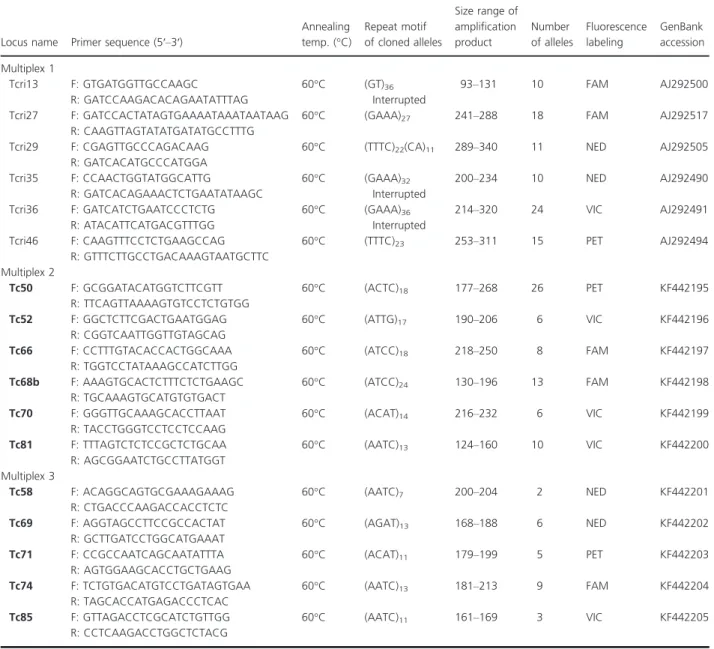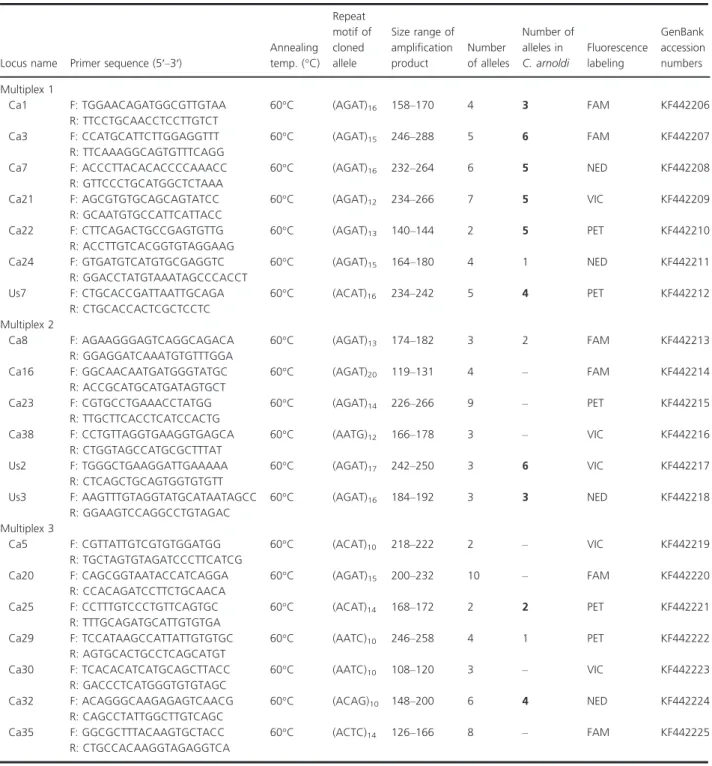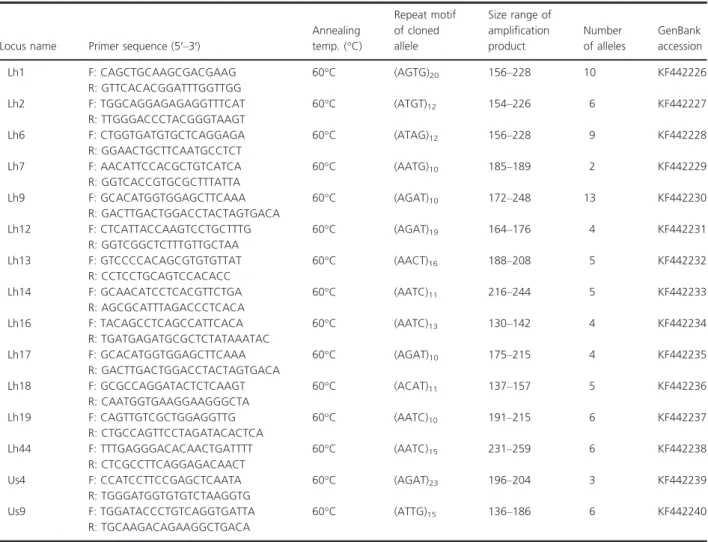What remains from a 454 run: estimation of success rates of microsatellite loci development in selected newt species (Calotriton asper, Lissotriton helveticus, and Triturus cristatus) and comparison with Illumina-based approaches
Texte intégral
Figure




Documents relatifs
The ailelie inheritance mode of this somatic hybrid provided valuable information for their utilization in a citrus breeding
Conversion Hexad´ecimal en D´ecimal (A) R´eponses Ecrivez chaque nombre dans le syst` eme de num´ eration de base indiqu´
The greater number of quail markers that amplified chicken DNA as opposed to guinea fowl DNA, and the higher similarity of the quail-chicken flanking sequences compared to
Table 1 Attributes of the Campoletis sonorensis and Chelonus insularis microsatellite loci: N indicates the number of females scored for each species, N a the number of alleles, and
2018 Cross-species amplification of microsatellite loci developed for Digitaria exilis Stapf in related Digitaria species.. Journal of Applied Biosciences 129:
Isolation and characterisation of 26 microsatellite loci from a widespread tropical hydrozoan, Macrorhynchia phoenicea (Leptothecata, Aglaopheniidae), and cross-ampli fi cation
Isolation and characterisation of 16 microsatellite loci from a widespread tropical hydrozoan, Lyto- carpia brevirostris (Busk, 1852)... Isolation and characterisation of
singularis microsatellite primers used in this study amplified in either of the other two mirid species, which suggests that the primers designed for S.. singularis
